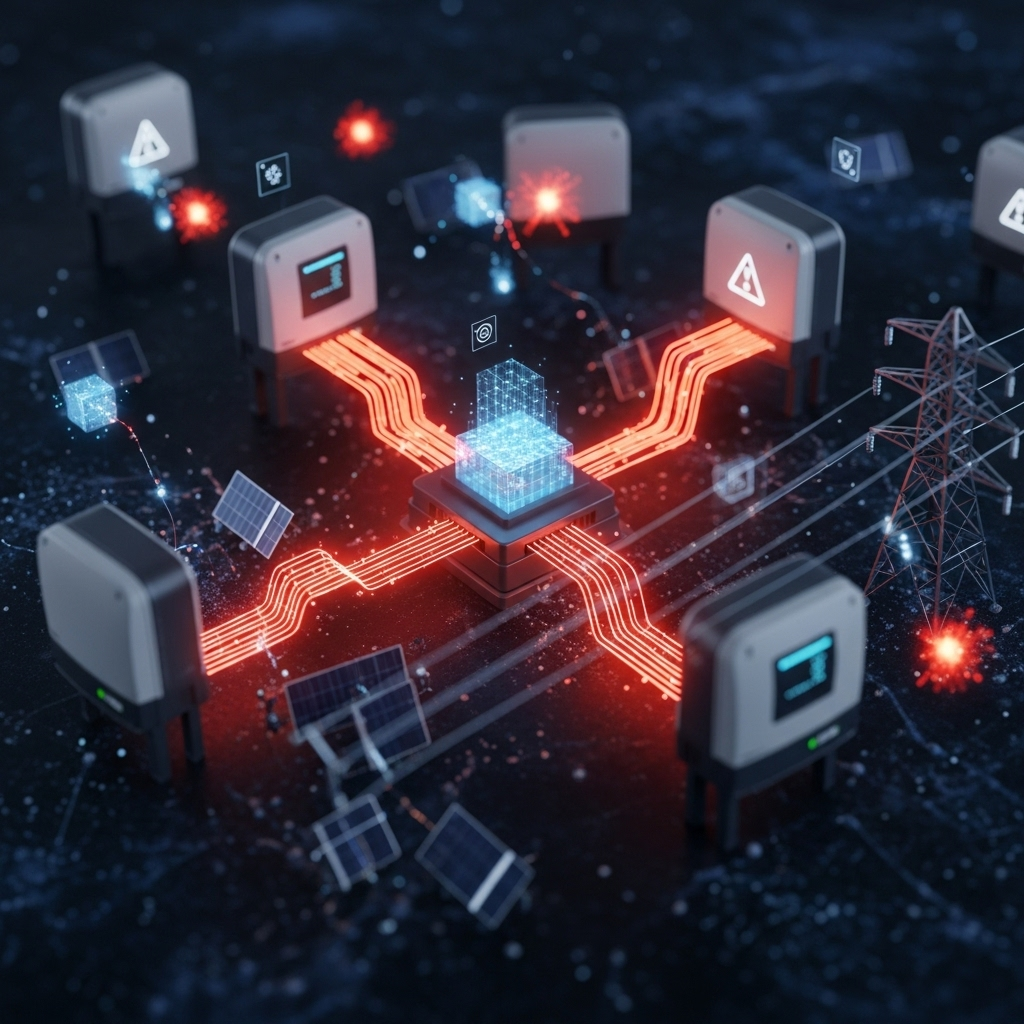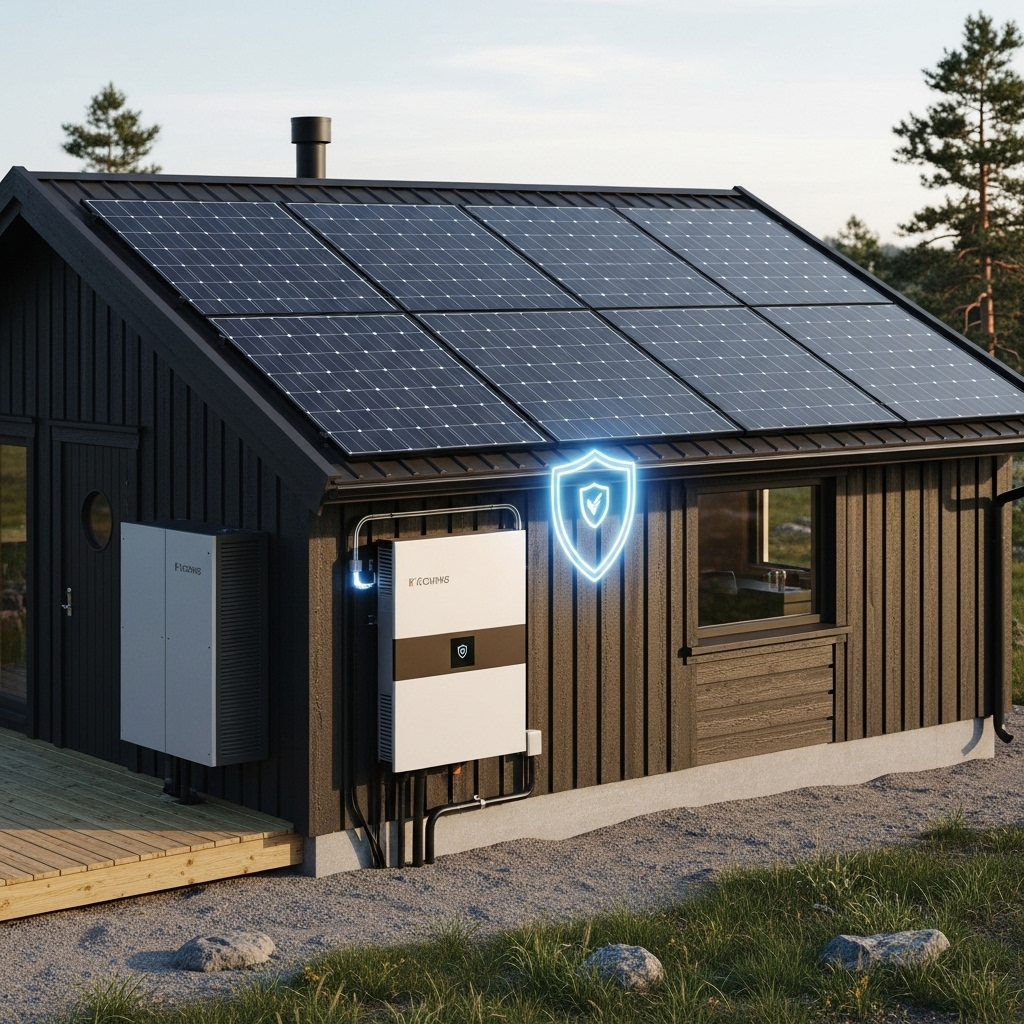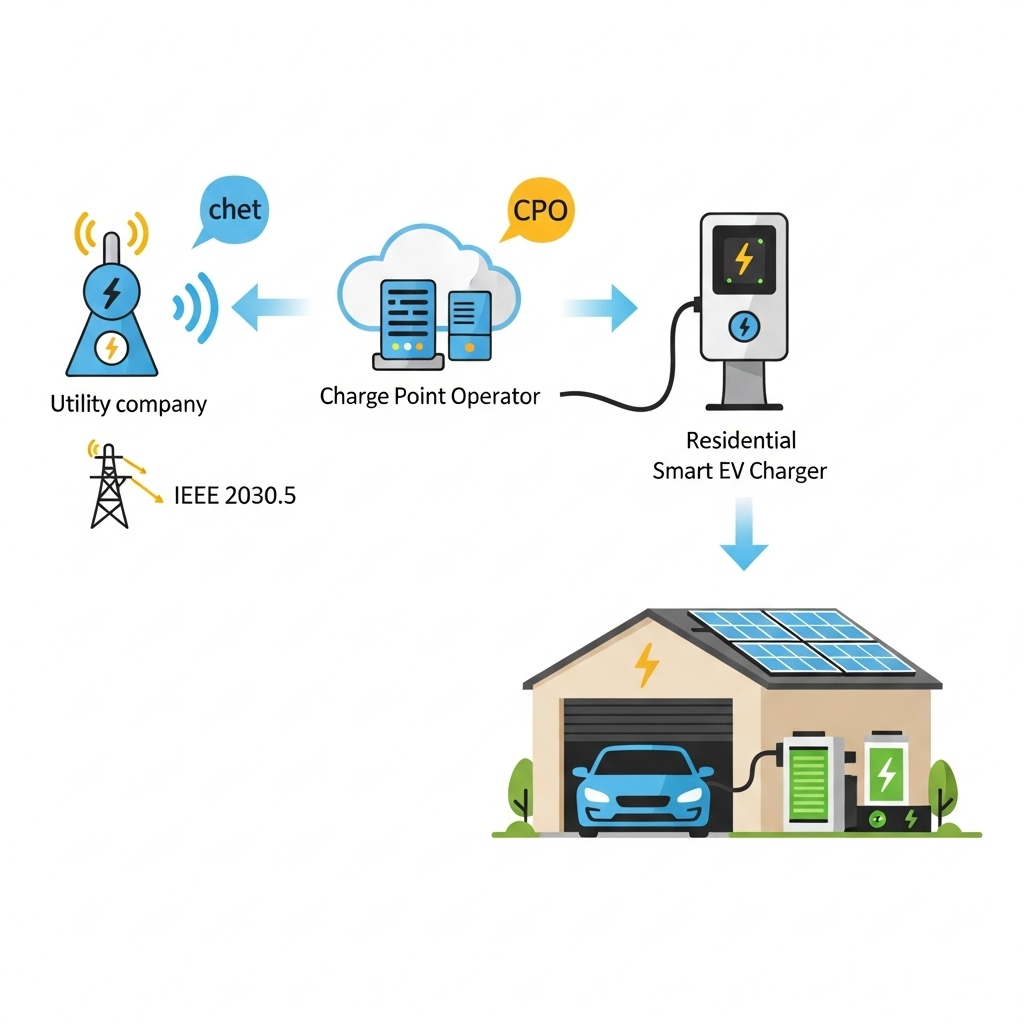The rapid growth of solar energy and energy storage systems (ESS) has created a highly connected and intelligent power grid. While this brings immense benefits in efficiency and control, it also opens a new front for security risks. Your fleet of inverters—the brains of your solar operation—can become a target for sophisticated, coordinated cyberattacks. Recognizing the warning signs early is crucial to protecting your investment and ensuring grid stability.
As energy infrastructure becomes more digital, its vulnerability to threats increases. The International Energy Agency (IEA) notes that malicious actors have already caused significant disruptions in the energy sector. Understanding the subtle signals of an attack is no longer optional; it's a fundamental part of responsible system management.
Why Inverter Fleets Are a Prime Target
A single compromised inverter is a problem. A thousand compromised inverters acting in unison is a crisis. Attackers target fleets because their coordinated nature allows for large-scale disruption, from causing regional blackouts to manipulating energy markets. The very connectivity that makes your fleet efficient also makes it a valuable target.
The Interconnected Digital Ecosystem
Modern inverters don't operate in isolation. They communicate constantly with monitoring platforms, grid operators, and each other through Supervisory Control and Data Acquisition (SCADA) systems. This web of communication, while essential for optimization, creates multiple entry points for attackers. A vulnerability in one area can potentially be exploited across the entire network.
Software and Communication as Attack Vectors
The software that runs your inverters is a primary attack surface. According to analysis in the IRENA report Grid Codes for Renewable Powered Systems, while the programmability of inverters offers great flexibility, it also means their behavior is defined by software. The report highlights a critical point: 'The software update functionality is a potential attack vector, so this too must be secured against unauthorised third-party interference.' Malicious actors can exploit remote control interfaces or push fake updates to gain control.
The Potential for Catastrophic Impact
A successful coordinated attack can have devastating consequences. In 2015, a cyberattack in Ukraine led to a blackout affecting 225,000 people, demonstrating the real-world impact of digital threats on energy infrastructure. For an inverter fleet, this could translate to sudden grid instability, widespread power outages, physical damage to hardware from rapid cycling, and significant financial losses.
Signals 1-3: Performance and Operational Anomalies
The most obvious signs of an attack often appear in the performance data of your fleet. Distinguishing a coordinated attack from routine maintenance issues requires careful observation.
Signal 1: Simultaneous, Unexplained Shutdowns
An individual inverter might fail due to a component issue. However, if multiple, geographically dispersed inverters in your fleet shut down or restart simultaneously without a corresponding grid event or severe weather, it is a major red flag. This suggests an external command is being sent to all devices at once, a hallmark of a coordinated cyber threat.
Signal 2: Widespread, Identical Parameter Changes
Inverters are highly programmable. Attackers may not shut the system down but instead alter its behavior. Watch for unauthorized, fleet-wide changes to critical settings like voltage trip points, frequency response curves, or power output limits. Because an inverter's response 'depends nearly entirely on the controller software,' as noted by IRENA, an attacker who gains access can systematically change these parameters to destabilize the grid or damage equipment.
Signal 3: Sudden Drop in Fleet-Wide Efficiency
A subtle attack might aim to degrade performance rather than cause an outright failure. If your entire fleet's energy production suddenly drops without a corresponding change in weather or sunlight conditions, it could indicate a malicious process is consuming resources or altering the Maximum Power Point Tracking (MPPT) algorithm. Understanding your system's baseline is critical. A comprehensive approach to monitoring involves tracking key metrics, and you can find an in-depth look at the ultimate reference for solar storage performance to help establish these crucial benchmarks.
Signals 4-5: Network and Communication Red Flags
Your network logs often hold the earliest clues of an intrusion. Unusual communication patterns can reveal an attacker's presence before they take disruptive action.
Signal 4: Abnormal Network Traffic Patterns
Be vigilant for unusual spikes in data traffic originating from or directed to your inverters. This could be an attacker exfiltrating data, probing for vulnerabilities, or establishing command-and-control communications. Pay close attention to traffic at odd hours or connections to unrecognized IP addresses or countries. This activity indicates that your devices are communicating with an unauthorized entity.
Signal 5: Mass Authentication Failures or Lockouts
A common preliminary step in an attack is a brute-force attempt to gain access. If your system logs show a massive number of failed login attempts across multiple accounts or from a single IP address, it's a clear sign of an attack. This may also result in legitimate users being locked out of their accounts, preventing them from monitoring or controlling the system.
Signals 6-7: Deceptive and Manipulative Indicators
Sophisticated attackers will try to hide their tracks, making it seem like everything is operating normally. These signals require a deeper level of scrutiny to uncover.
Signal 6: Mismatched Data Between Physical State and Monitoring
This is a particularly dangerous sign. Your monitoring software (SCADA) may report that all inverters are online and producing power normally, but a physical inspection or data from a separate, independent meter reveals they are offline or operating outside of normal parameters. This indicates a 'man-in-the-middle' attack where the attacker is intercepting and altering the data stream to hide their actions.
Signal 7: Unauthorized or Forged Firmware Updates
Always treat software update notifications with caution. If you receive a prompt to update your inverter firmware that was not announced through official channels or seems suspicious, do not proceed. Attackers can disguise malware as a legitimate update to gain persistent, low-level control over your devices. This tactic directly exploits the update functionality that is a known vulnerability.
Building a Proactive Defense
Detecting an attack is only half the battle. A robust cybersecurity posture is built on proactive defense and a clear plan of action. The IEA's report on Energy and AI highlights that a typical utility faced over 1,500 attacks per week in 2024, underscoring the need for constant vigilance.
Key Defensive Strategies
Implementing strong security measures is not a one-time task but an ongoing process. Key strategies include:
- Network Segmentation: Isolate your inverter network from other business or home networks to contain a potential breach.
- Cyber Asset Inventory: Maintain a detailed list of all connected devices, their software versions, and their configurations.
- Access Control: Enforce strong, unique passwords and multi-factor authentication for all user accounts.
- Regular Audits: Periodically hire security professionals to perform penetration testing and identify vulnerabilities.
Creating a Cyber Emergency Response Plan
When you detect a potential attack, a pre-defined plan eliminates guesswork. Your plan should include steps to isolate affected systems from the network, protocols for preserving evidence for forensic analysis, and clear contact information for your security team, equipment manufacturers, and relevant authorities.
| Signal Indicator | Normal Operation | Potential Attack Indicator |
|---|---|---|
| Inverter Status | Random, isolated faults or reboots | Multiple, simultaneous reboots or shutdowns |
| Parameter Settings | Stable, changed only by authorized personnel | Identical, unauthorized changes across many units |
| Network Traffic | Predictable patterns based on reporting intervals | Sudden spikes, traffic to/from unknown IPs |
| User Logins | Occasional failed attempts | Mass login failures, user account lockouts |
| Data Accuracy | Monitoring data matches physical reality | Discrepancies between reported and actual status |
Moving Forward with Vigilance
As our energy infrastructure grows smarter and more interconnected, cybersecurity can no longer be an afterthought. It must be a core component of system design, deployment, and operation. By understanding these seven signals, you can move from a reactive to a proactive security posture. Vigilance, combined with robust defensive strategies and a clear response plan, is your best defense against the evolving landscape of coordinated cyber threats targeting inverter fleets.
Disclaimer: This article provides general information and is not a substitute for professional cybersecurity or legal advice. Always consult with qualified security experts to assess and protect your specific systems.
Frequently Asked Questions
What is a coordinated cyberattack on an inverter fleet?
A coordinated cyberattack is a synchronized effort by a malicious actor to compromise and control multiple inverters at once. Instead of targeting a single device, the attacker uses automation to send commands to an entire fleet, aiming to cause large-scale disruption, grid instability, or data theft.
Are smaller, residential solar systems also at risk?
Yes. While large fleets are a high-value target, residential systems are also vulnerable, especially if they use default passwords or unpatched software. Attackers can aggregate thousands of compromised home systems into a 'botnet' to launch larger attacks against the grid.
What is the first thing I should do if I suspect an attack?
The first step is to follow your cyber emergency response plan. This typically involves isolating the affected systems from the internet and internal networks to prevent the attack from spreading. Then, contact your security provider or a cybersecurity expert to begin investigation and remediation. Do not attempt to reboot or alter the systems yourself, as this can destroy valuable forensic evidence.
How can I improve my inverter's security?
Start with the basics: change all default passwords to strong, unique ones. Enable multi-factor authentication (MFA) if available. Ensure your inverter's firmware is always up to date with patches from the official manufacturer. Additionally, consider segmenting your network to isolate your solar equipment from other devices.





Leave a comment
All comments are moderated before being published.
This site is protected by hCaptcha and the hCaptcha Privacy Policy and Terms of Service apply.